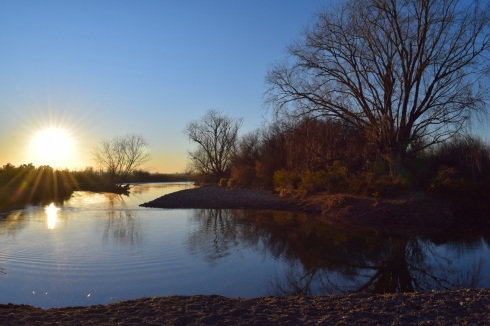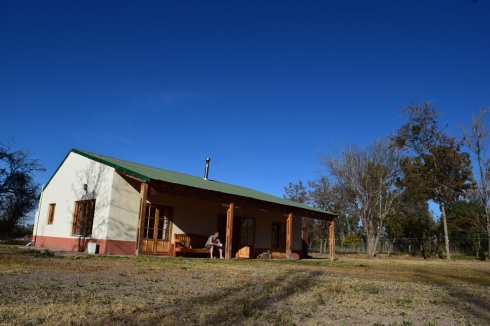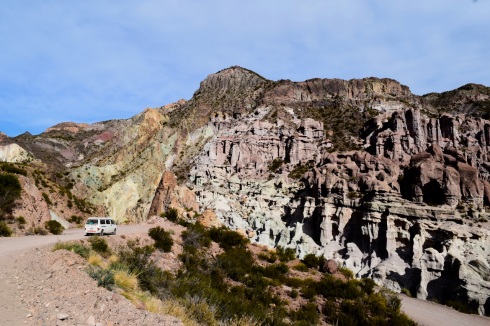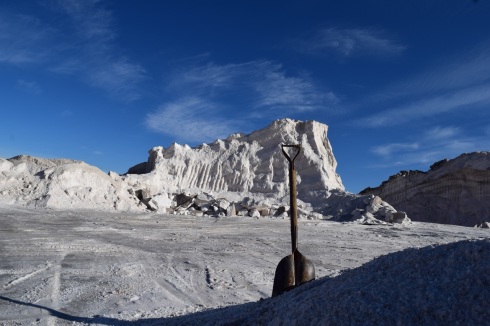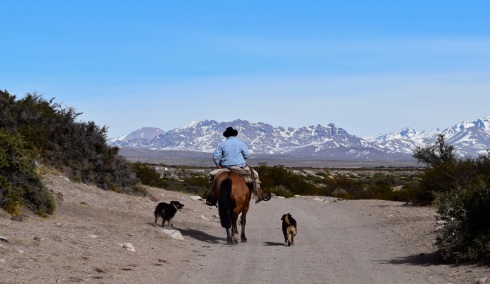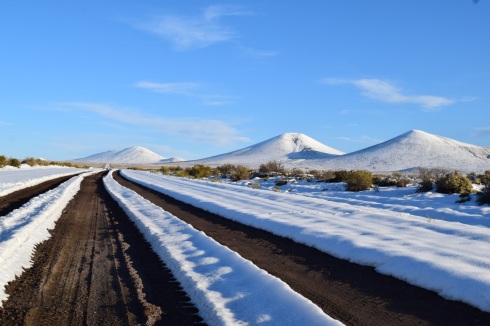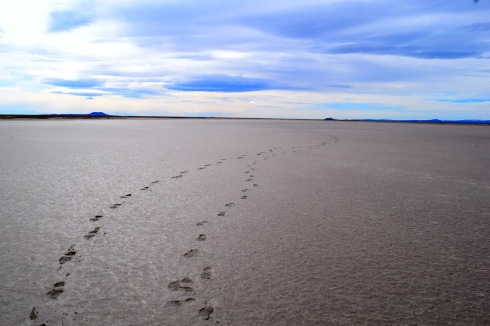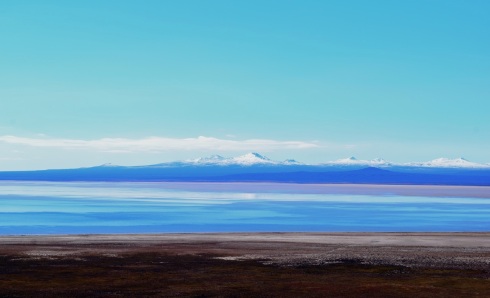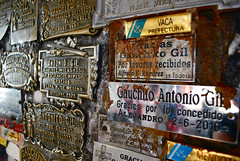Salto de las Rosas, San Rafael, Argentina
[by Paula]
If I had to select one word to sum up our time so far in San Rafael, it would be ‘wood’.
Cutting, felling, chain-sawing, gathering, dragging, rolling, splitting, throwing, snapping, sweeping, sorting, piling and burning the stuff has become a daily preoccupation during our work-exchange placement here in Argentina’s Mendoza province. We arrived here in early June and our stint is, unbelievably, already drawing to a close.
Of course, there has been more to the last 12 weeks than just the wood thing. In fact, we’ve been rather busy and productive with all kinds of work and domesticity, plus a little bit of travel. We’ve been less diligent with the blog though, so to pick up where we left off we have to briefly skip back to May, when we took a month-long trip back to the UK to see family and friends.
Let’s just say it involved a constantly revolving merry-go-round of hellos, goodbyes, trains, planes, pubs, lunches, dinners, large gatherings, small gatherings, far too many drinks, obscene amounts of food and plenty of laughs. We met new babies, clung pathetically to our ageing cat (now 21!), gawped at our rapidly-changing nieces and nephews, and enjoyed spending time with ‘old’ faces.
There is something a little bittersweet about these visits home. While the very purpose of being there is to see everyone, we just wish it didn’t have to be quite so intense and knackering. Poor us! We can hardly complain when it’s the path we’ve chosen and we’re lucky enough to be able to travel back to see people once in a while, but we do miss the everyday-ness of those relationships. This photo gallery sums up some of what went on, with apologies to those who have been airbrushed from history by my total failure to take any photos at several of our meet-ups, especially in London.
On our return to Argentina we came directly to the village of Salto de las Rosas, in the lovely San Rafael area, which was to be our home for three months. We’d already set up the placement – organised through Workaway – and had met our very welcoming hosts Susan and Dave before departing for the UK.
It’s a straightforward exchange – Susan and Dave, who are UK/US expats, hire ‘Workawayers’ to put in four hours of work per day, five days a week, in exchange for free accommodation. One of the many reasons we’d applied was that the digs on offer was an entire two-bedroomed house on the land Susan owns. It was exactly what we wanted, so we could live independently and get stuck in to our own journalism work in our free time.
We’re amazed that we’ve managed to keep travelling for four years but needless to say the funds are getting a bit thin. We needed to stop moving for a while to focus on finding some more freelance work. Also, it wouldn’t hurt to spend the coldest part of winter in a nice warm house. We also like the combination of doing some outdoor grafting for half the day, and freelancing for the other half, whilst having people around for a bit of socialising. (Regular readers might recall we did something similar in Bolivia.)
We soon settled into a routine of rapidly throwing on loads of clothes in the freezing early morning and heading out to walk Susan and Dave’s dogs – loveable clingy mutt Catorce, and bouncy young Rottweiler Cali. They’ve got used to our habits and are usually hurling themselves at the door in a fit of hysteria by the time we are putting our shoes on (the dogs, not Susan and Dave).
Sometimes Catorce sleeps on our bed, just to be sure we don’t try anything sneaky like a lie-in.
Winters here get very cold at the start and end of the day, but are mostly dry, clear and sunny. Most mornings we can see the snowy Andes in the distance as we head down the path to a river that looks beautiful in the morning light.
Until lunchtime we’re doing tasks around the garden, usually involving raking and burning mountains of fallen leaves, weeding, tidying, and doing that wood thing. Both our houses only have one source of heating – a wood fire in the living room. Additionally, Susan and Dave can only heat their water via a wood fire. That’s a hell of a demand for wood in winter. There are piles and piles of it outside their house – all different sizes and stages of seasoning.
Aside from the need for stuff to burn, there are trees on the land that are dead, falling down or in dangerous positions and need to be felled. We’ve been learning a thing or two from Dave about avoiding a massive head injury while chopping down trees, and trying not to cut our hands off with power tools.
Working together with a chain-saw has certainly brought a whole new element of trust to our marriage. All I’m saying is, just don’t make me angry.
We also ripped down a crumbling car port and helped build a new one. Dave and Jeremy have started constructing a wood shed too. All from wood, obviously. Ta-da!
Once or twice a week we gather with Susan, Dave and Susan’s daughter Tiv, to have dinner, drink wine, and display unnecessary levels of competitiveness while playing cards. Dave’s a musician and sometimes he gets the guitar out.
San Rafael is a wine-producing area and two of Susan and Dave’s close friends Sue and Malcolm – from the UK – own a small local vineyard and produce a gorgeous Malbec. Double bonus! We’re all keen on cooking, wine and talking, so it’s been great to enjoy several meals together. I’m already calculating how much of their wine I’ll be able to fit in the van when we leave. I mean, it’s not like I need all those clothes, is it?
Meanwhile our endeavours to get some paid work have been encouragingly fruitful so far. Our earlier research work in Welsh Patagonia resulted in four pieces for the BBC, including this audio slideshow and a feature on my impressions of the area, plus an article on the story of Welsh afternoon teas in Patagonia, in new online magazine Cultures & Cuisines.
Jeremy is currently writing an eight-part series for a geeky VW magazine in the UK, and continues to get some work for union magazines. He’s also becoming a shipping bore, writing articles for the journal of shipping union Nautilus, including large features on Argentine naval policy and the new Nicaragua canal. We’re also working together on a project to write web content for a campaign group in the UK.
Living in a rural area can make internet-reliant work frustrating though. We have a limited daily internet allowance, and even when it’s working it’s often refusing to co-operate. We are occasionally found to be smacking our foreheads against the laptop, and sometimes drive 28km into San Rafael city to get things done more quickly.
As with our previous stints at living in a house, it’s good to catch up with things that get neglected when we’re always on the road. Boring stuff like getting new glasses, washing things that are continually dirty but have to be ignored, and working through the never-ending list of van maintenance. If you’re wondering why there seem to be fewer van dramas these days, it’s partly because our earlier issues have helped us be a little bit more zen about these things, and partly because Argentina has been kinder to us. Of course things still break sometimes, but on every occasion so far we’ve either been carrying the part or been able to source it here, which saves a huge amount of time, money and stress.
So life has been relatively sedate , but it’s not been all work and no play. Whenever possible we’ve been spending weekends exploring the province and enjoying some brief returns to the camping life.
There are some fabulous landscapes right on our doorstep, like the colourful rock formations around Valle Grande, the shimmering El Diamante salt flats and the road to the snowy mountains of the nearby ski resort of Las Leñas.
Some places are amazingly low key. There’s a tiny, rusty old sign for Laguna Blanca at a gate by the side of the road to Malargüe. We drove up it to find an entirely deserted, phenomenal mountain lake.
I wouldn’t say we’re bored of the red meat culture in Argentina (is that even possible?) but we were beside ourselves with excitement to visit a trout farm near Malargüe that has a restaurant and campsite attached. Fresh fish! So fresh that we watched it being selected from the pond and gutted on the spot less than half an hour before it arrived on the plate. Not only did we eat baked trout for lunch that day, but the set menu was a trout-fest of pate, mousse, empanadas, smoked trout and more.
This area is full of dams for hydro-electricity and the resulting reservoirs are invariably stunning. The nearby Los Reyunos area has been lovely for some walks and picnics.
Of course we couldn’t be here and neglect to pay attention to some vineyards. On a grey weekend in the nearby Valle de Uco we toured a couple of vineyards and indulged in some tastings, punctuated with a beautiful lunch in the town of Tupunganto. We’ve had a few chilly nights camping in recent months, but this one took the prize when we woke up to sleet. We realized we’re turning into wimps when we headed straight home for some warmth.
Well, we thought that had taken the prize until we decided to visit the Parque Provicial Payunia, a reserve near Malargüe which has the world’s highest concentration of volcanic cones – around 800 in a 4,500-sq km area! It’s a low key place with not a lot of information, inadequate mapping and a lack of infrastructure. Okay, so it’s mid-winter but we can never resist a volcano, nor a challenge, so off we went.
We were surprised but excited to see some snow at road level as we drove the back dirt-road from El Nihuil to the boundary of the reserve. As dusk fell the snow levels increased and we started to wonder what was ahead, but found it hard to care because the horizon was just full of snowy volcanic cones and the views incredible.
We’d planned to just get as far as possible that night and pull off somewhere on the road to sleep. But the snow was increasingly banked up over the roadside ditches and we couldn’t find anywhere to stop.
After a few hours, at dusk, we came across some guys in a truck who advised us to drive 10km onwards to a house that had space we could probably use. After about 20 miles we were still driving, the road was getting increasingly slippy and we’d given up on the house.
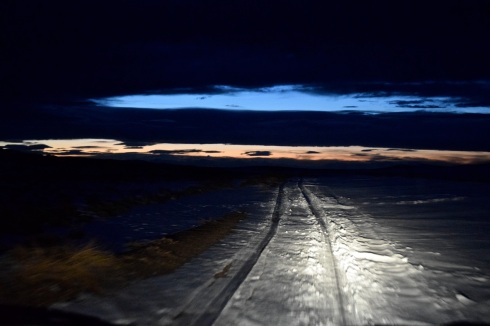
Driving on snow, in the dark, hadn’t really been in the plan. Road from El Nihuil Mendoza province, Argentina.
Just then we saw the lights and pulled in. The bemused owner and his son came out to investigate – what they made of the gringos turning up in the dark in such a remote area, we’ll never know. They, of course, agreed to let us stop and sleep next to their place, where there was some flat gravel to park on.
Next morning we work to a lovely crisp snowy scene, and moved on to the eastern side of Laguna Llancanelo, a phenomenal lake at the edge of the reserve. From our camping spot Jeremy counted 39 visible volcanoes. We walked out on to the dry lake bed, seeing water in the distance but never reaching it. A local gaucho cycled over from his house to see if we’d broken down, and told us that part of the lake had been dry for years.
Next day we drove to the lake’s ‘official’ entrance and were directed by the park guards to one of the most incredible viewpoints we’ve encountered on this trip – an easily-accessible volcano top with 360-degree views of the snowy Andes, countless volcanoes and the flamingo-rich Laguna Llancancelo. We spent an hour there on a gloriously sunny Sunday, and not another soul came.
It was an amazing weekend, but for the first time we did have to resort to sleeping with the full complement of thermals, sleeping bags and all our blankets.
It’ll be back to full-time camping when we leave here in September, so it’s time to toughen up again.
What’s the plan post-San Rafael? That’s a very good question and kind of depends on what day you’re asking. We’ll most likely head to parts of central Argentina that we haven’t yet visited, and return to some places in the far north that we loved when we first arrived in the country a year ago.
Whatever happens, let’s hope the nights start to get warmer when we hit the road again, because we’ve become just a bit too accustomed to that roaring wood fire.
Days: 1,422
Miles: 38,647
Things we now know to be true: There’s no way of knowing how much wood a woodchuck could chuck.
IT’S A BUMPER CROP… MORE PHOTOS BELOW!
Click on any photo to open as a slideshow:-

